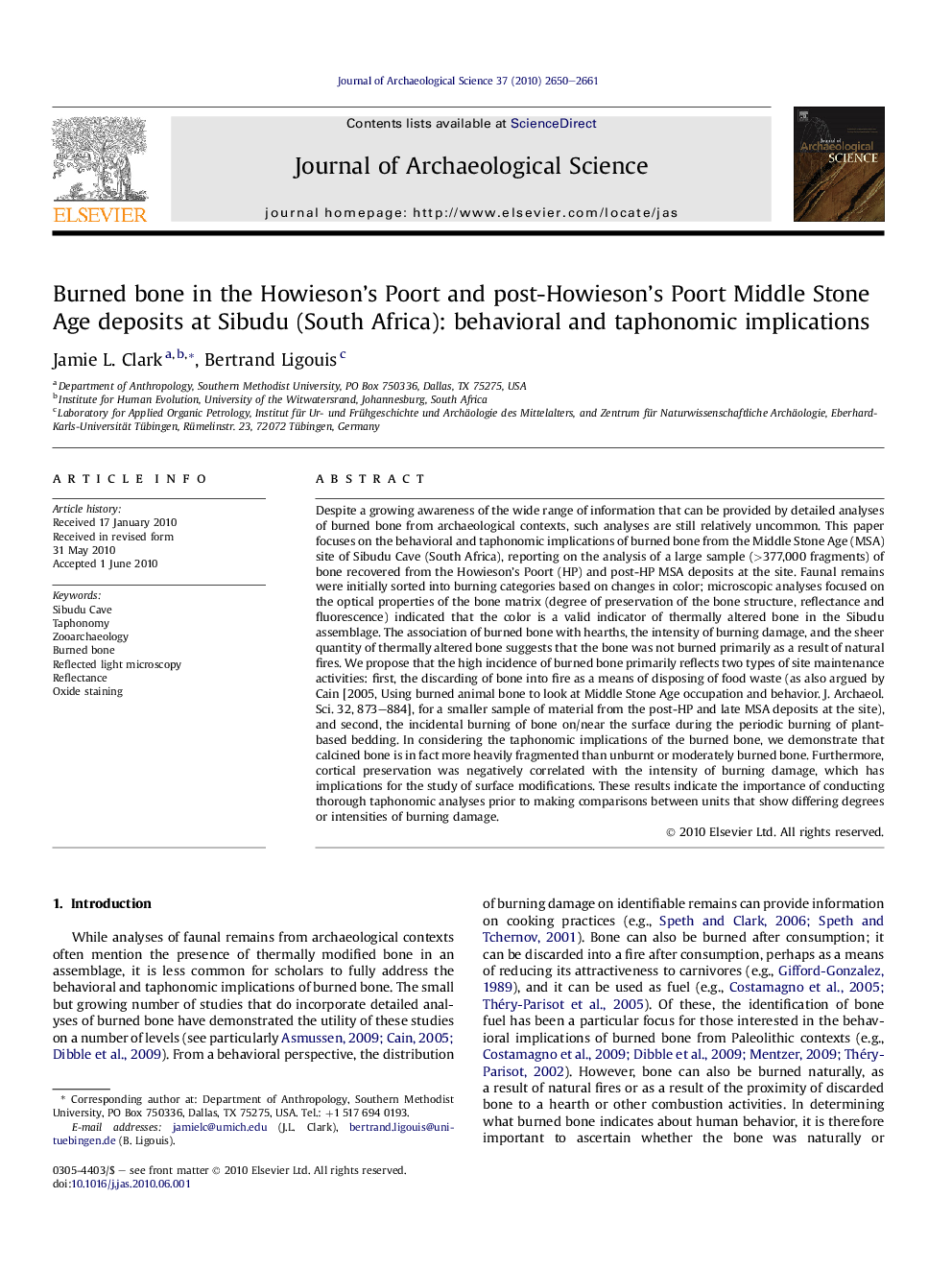| کد مقاله | کد نشریه | سال انتشار | مقاله انگلیسی | نسخه تمام متن |
|---|---|---|---|---|
| 1035965 | 943871 | 2010 | 12 صفحه PDF | دانلود رایگان |

Despite a growing awareness of the wide range of information that can be provided by detailed analyses of burned bone from archaeological contexts, such analyses are still relatively uncommon. This paper focuses on the behavioral and taphonomic implications of burned bone from the Middle Stone Age (MSA) site of Sibudu Cave (South Africa), reporting on the analysis of a large sample (>377,000 fragments) of bone recovered from the Howieson’s Poort (HP) and post-HP MSA deposits at the site. Faunal remains were initially sorted into burning categories based on changes in color; microscopic analyses focused on the optical properties of the bone matrix (degree of preservation of the bone structure, reflectance and fluorescence) indicated that the color is a valid indicator of thermally altered bone in the Sibudu assemblage. The association of burned bone with hearths, the intensity of burning damage, and the sheer quantity of thermally altered bone suggests that the bone was not burned primarily as a result of natural fires. We propose that the high incidence of burned bone primarily reflects two types of site maintenance activities: first, the discarding of bone into fire as a means of disposing of food waste (as also argued by Cain [2005, Using burned animal bone to look at Middle Stone Age occupation and behavior. J. Archaeol. Sci. 32, 873–884], for a smaller sample of material from the post-HP and late MSA deposits at the site), and second, the incidental burning of bone on/near the surface during the periodic burning of plant-based bedding. In considering the taphonomic implications of the burned bone, we demonstrate that calcined bone is in fact more heavily fragmented than unburnt or moderately burned bone. Furthermore, cortical preservation was negatively correlated with the intensity of burning damage, which has implications for the study of surface modifications. These results indicate the importance of conducting thorough taphonomic analyses prior to making comparisons between units that show differing degrees or intensities of burning damage.
Journal: Journal of Archaeological Science - Volume 37, Issue 10, October 2010, Pages 2650–2661